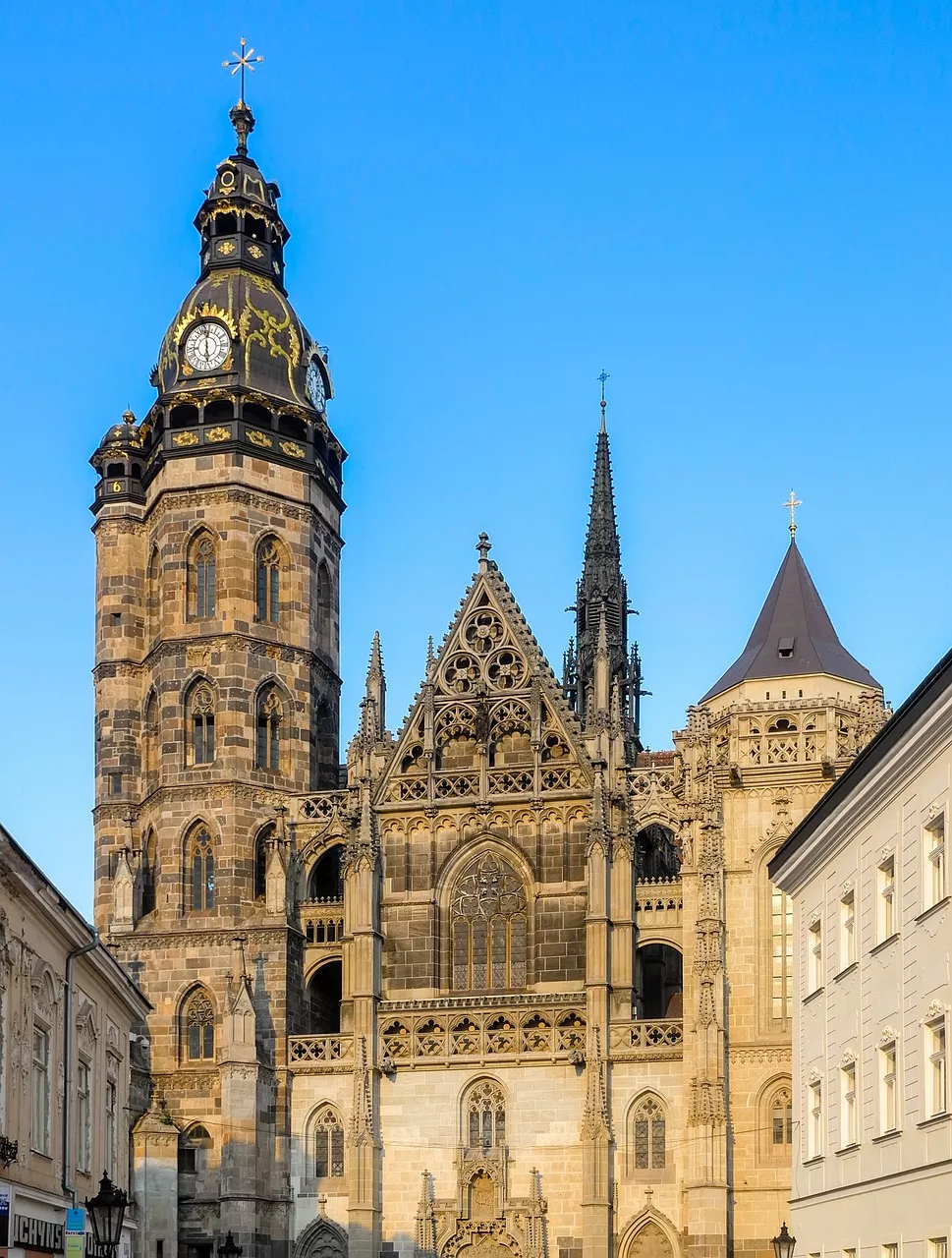Košice guide 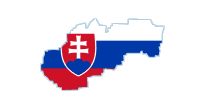
The second largest city in Slovakia will enchant you with its historic center, full of Gothic, Renaissance and Baroque monuments. The main street is lined with cafes, shops and iconic monuments, such as the Cathedral of St. Elizabeth - the largest Gothic cathedral in Slovakia and the easternmost of its kind in Europe. Take a walk along Hrnčiarská Street, known as the "craft alley", or visit Miklušov Prison, which will show you a somewhat darker side of the Middle Ages. And if you like nature, you will enjoy the Botanical Garden or the surrounding Volovské vrchy Hills.
Sights and attractions - What shouldn´t you miss in Košice? St. Elizabeth's Cathedral, the Main street, the singing fountain,...
Accommodation - Tips for pleasant and popular accommodation in a guesthouse in the center or outside the city center, in a cheap hostel or a luxurious 4* hotel.
Typical food and drink - What you should try in Košice - dumplings halušky, holubky or Tokaj wine.
Practical tips - Here you can learn about local transport, customs and festivals.
Weather - What temperatures can you expect in Košice during the year? When it rains the most and when, on the contrary, the sun often shines.
Celebrities - What famous personalities lived and worked in Košice?
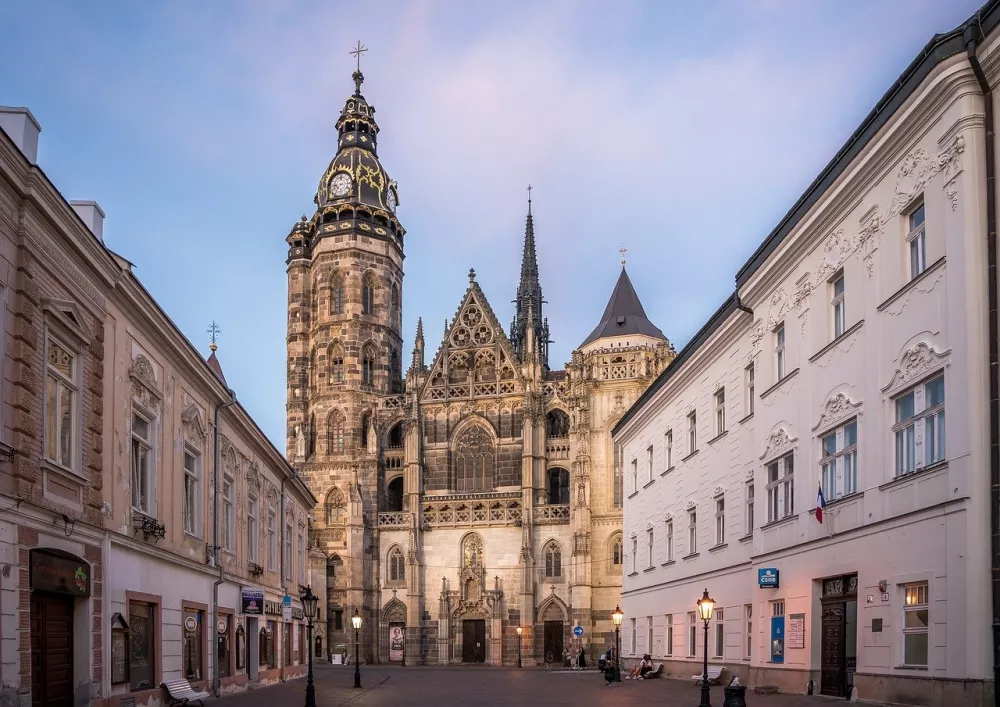
The second largest city in Slovakia and the administrative center of the Košice Region is located in the east of the country, near the border with Hungary. Less than a quarter of a million inhabitants live here. The Hornád river flows through the town.
The history of this city with a rich past dates back to the Middle Ages. The first written mention of the city dates back to 1230. In 1369, Košice became the first city in Europe, and thus in the world, to receive its own coat of arms with a coat of arms document from King Louis I the Great.
In the 16th and 17th centuries, the city played a role as a center of trade and culture within the Habsburg Empire. After the First World War, Košice became part of Czechoslovakia. During the Second World War they were occupied by Hungary, but after the war it returned to Czechoslovakia. It has belonged to the Slovak Republic since 1993. In 2013, Košice was declared the European City of Culture.
In Košice, they have the largest urban monument reserve in Slovakia. Here you can see the largest Slovak church and one of the most important Gothic buildings in Central Europe, St. Elizabeth's Cathedral. It is known for its beautiful stained glass windows and unique altar. Next to St. Elizabeth's Cathedral stands the Gothic bell tower Urban's tower.
The main street is a pedestrian zone with many historic buildings, cafes and shops. The singing fountain and the Košice State Theater are also located on this street.

You will also find the East Slovak Museum here, one of the oldest museums in Slovakia with rich collections in the fields of archaeology, history and ethnography.
The ruins of the castle, located on the hill above the town, invite you to take a walk. The observation tower then offers wonderful views of Košice and the surrounding area.
Košice also appears on the list of university cities. You will find several universities here, including the University of Pavel Jozef Šafárik and the Technical University in Košice.
Košice is an important industrial center, mainly thanks to the U.S. Steel Košice steelworks, one of the largest employers in the region.
The growing service sector, including IT and telecommunications, leases to the economic development of the city.
Košice International Airport offers regular connections to several European cities.
The city has good rail connections with the rest of Slovakia and neighboring countries.
An efficient network of buses and trams provides transportation around the city.
Košice has several beautiful parks, including the Municipal Park and the Botanical Garden of the University of Pavel Jozef Šafárik.
The city is home to several sports teams, including the hockey club HC Košice, which plays in the top Slovak league.
During the summer months, they organize the Košice Cultural Summer, a series of cultural events and festivals. You can also visit the White Night, an art festival that brings light installations and artistic performances to the streets of the city.
Sights and attractions
St. Elizabeth's Cathedral - The largest church in Slovakia and one of the most important Gothic buildings in Central Europe. It covers an area of 1200 square meters and can accommodate up to 5000 people. The cathedral boasts beautiful stained glass windows and a unique altar. The main altar contains the largest collection of Gothic panel paintings in Europe - a total of 48. Visitors will certainly be impressed by the unique double spiral staircase.
Address: Hlavná ulica 1, Košice.

Urban's Tower - Originally a Gothic bell tower standing next to the Cathedral of St. Elizabeth. The tower was built at the end of the 14th century and named after St. Urban, the patron saint of winemakers. The tower was damaged by fire several times, so it was often rebuilt. The interior houses an exhibition of wax figures dedicated to important personalities connected with the history of Košice.
Address: Hlavná ulica, Košice.
St. Michael's Church - A Gothic church from the 14th century, which served as a cemetery chapel. It is located in close proximity to the Cathedral of St. Elizabeth. Together with the Cathedral and the Urban Tower, it forms a national cultural monument, declared in 1970. Since the 17th century, it has been significant because it was the only church in Košice where services were held in Slovak.
Address: Hlavná ulica 21, Košice.
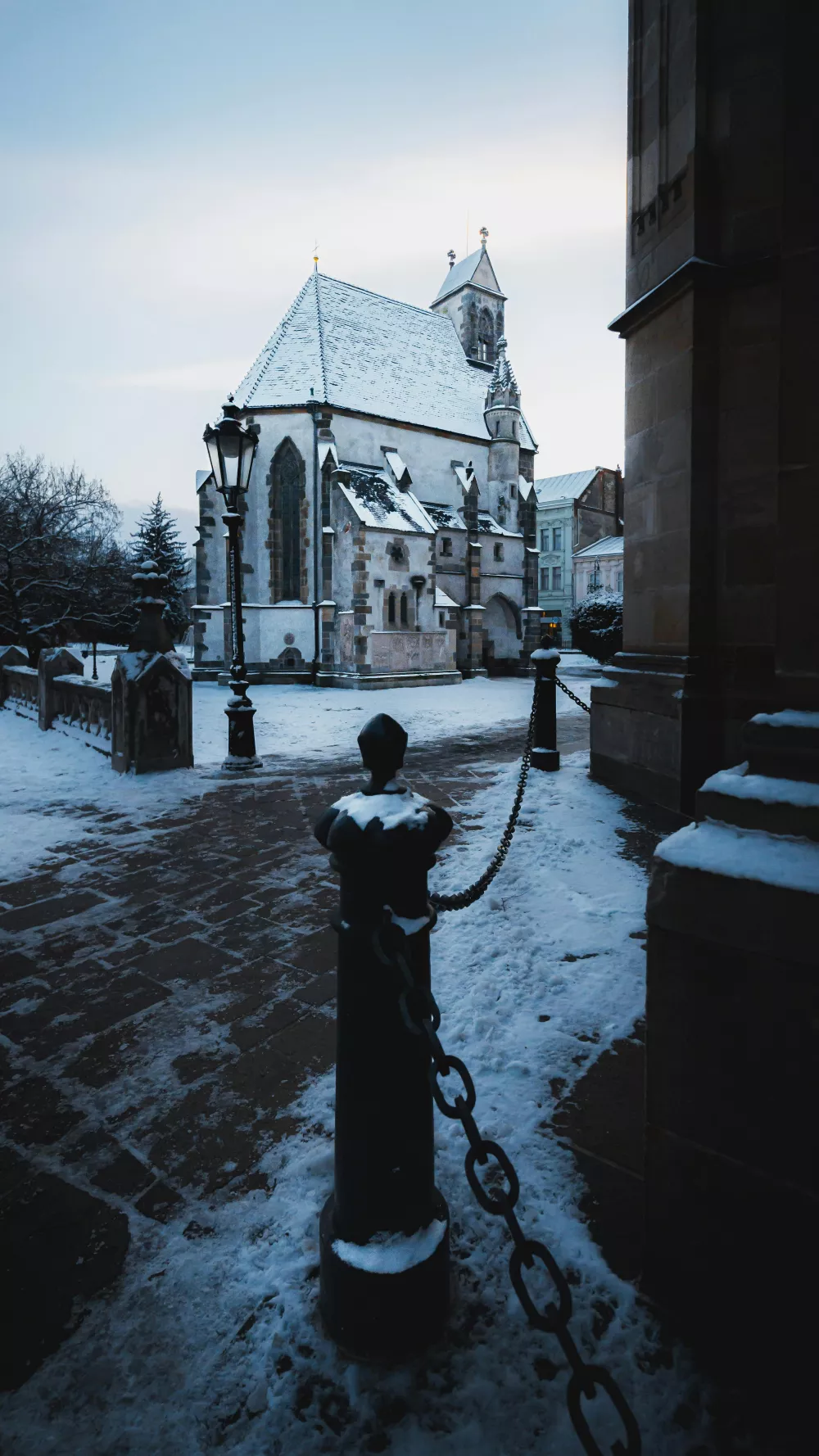
Main street - A pedestrian zone with many historical buildings, cafes and shops. In addition to the Cathedral, this street is also home to the Singing Fountain and the Košice State Theatre. This street was the main square in the Middle Ages, which is reflected in its unusual widening in the middle.
Address: Hlavná ulica, Košice.
Košice State Theater - A beautiful neo-baroque building from the late 19th century. The theatre offers a wide range of performances including opera, ballet and drama. The original paintings in the auditorium depict scenes from Shakespeare's tragedies. The park in front of the theatre is home to the popular Singing Fountain.
Address: Hlavná ulica 58, Košice.
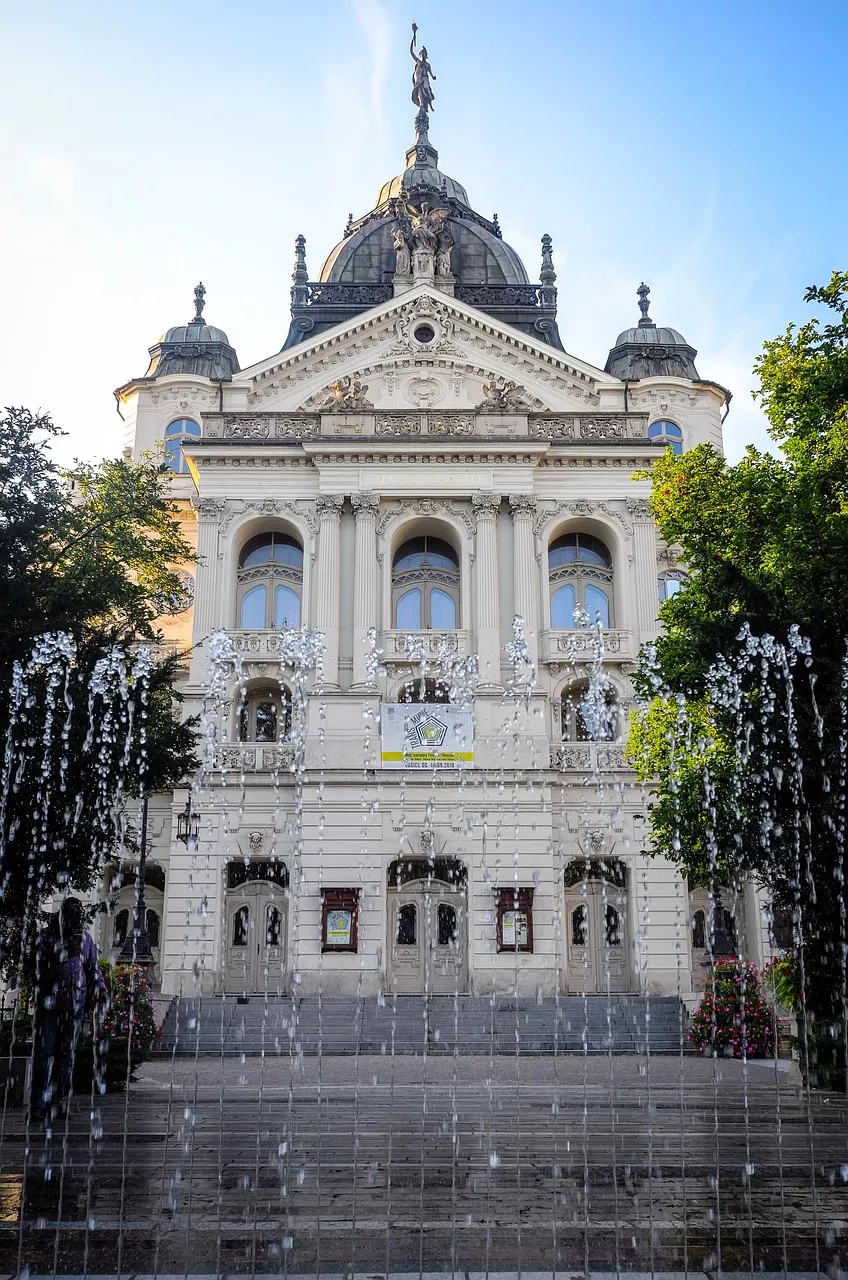
Mikluš Prison - A historic prison from the early 17th century. Today, the prison houses a unique museum exhibition that presents medieval criminal law, the daily life of the Košice executioner, and the history of the building itself, including authentic original executioner swords and a reconstruction of the hunger strike.
Address: Pri Miklušovej väznici 10, Košice.
Jacob's Palace - A historic building from the late 19th century built in the neo-Gothic style. The palace is known for its beautiful architecture and interesting history. The builder Arpád Jakab incorporated discarded stone parts from the Cathedral of St. Elizabeth, which he acquired during its renovation, into the construction of the palace. In April and May 1945, the President of Czechoslovakia, Edvard Beneš, briefly resided here.
Address: Mlynská 30, Košice.
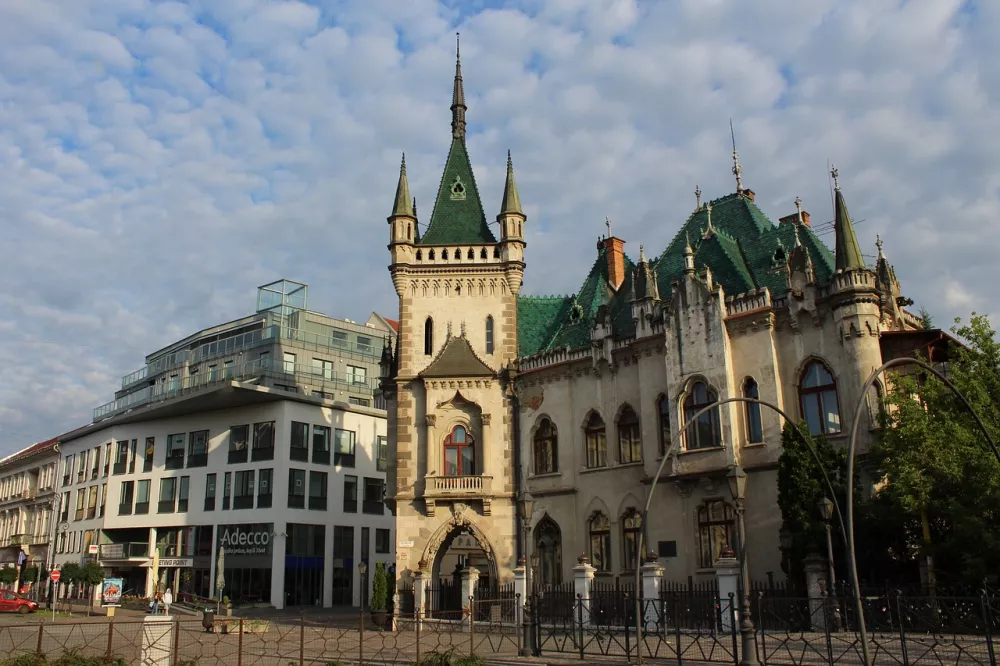
Eastern Slovak Museum - One of the oldest museums in Slovakia with rich collections in the fields of archaeology, history and ethnography. The museum also includes an exhibition focused on the Košice Gold Treasure. It is a unique collection of 2,920 gold coins, three medals and Renaissance gold chains. The treasure was found in 1935 during construction work on Hlavní ulica in Košice. The museum also exhibits a wooden church from Kožuchovce, which was transferred to the courtyard as an example of East Slovak sacral architecture.
Address: Námestie Maratónu mieru 2, Košice.
Eastern Slovak Gallery - A gallery with an extensive collection of fine art from the Gothic period to the present day. They focus on researching the phenomenon of the so-called Košice Modernism of the 1920s, which fundamentally influenced the development of modern art in Slovakia. The gallery is located on Hlavná Street in the former County Hall. They organize around 40 exhibitions a year. In this hall, on April 5, 1945, the so-called Košice Government Program was announced - a significant milestone in Czechoslovak history.
Address: Hlavná ulica 27, Košice.
Singing Fountain - The first and largest “singing fountain” in Slovakia was opened in 1986. The fountain on Hlavná ulica between the Cathedral of St. Elizabeth and the State Theatre synchronizes the water jets with music and light effects. The fountain consists of 750 jets that can spray water up to a height of 19 meters. It includes a carillon with 22 bells, symbolizing the city districts of Košice.
Address: Hlavná ulica, Košice.
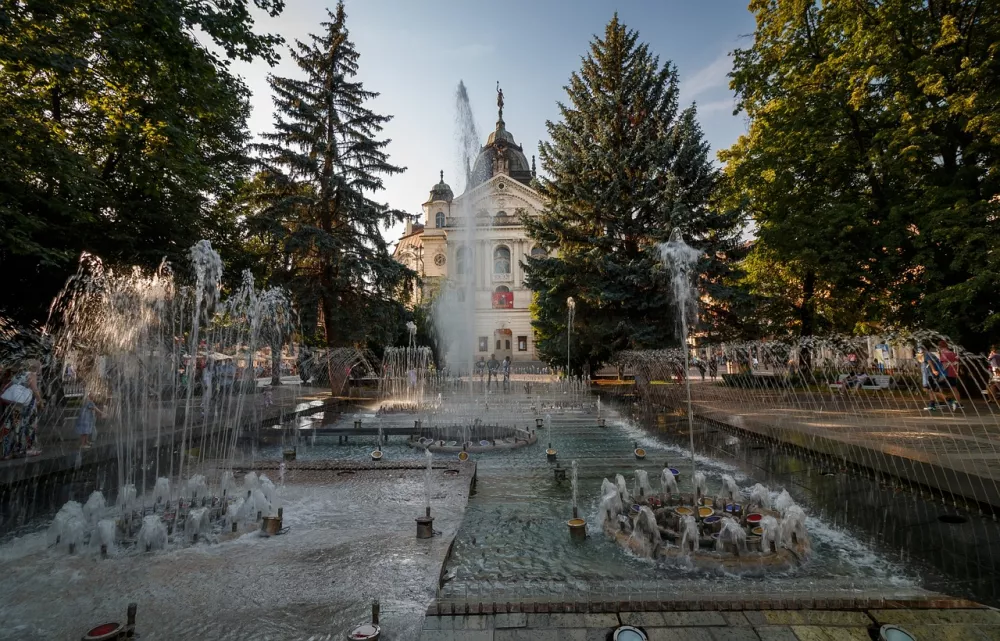
Steel Arena - A modern multifunctional hall that hosts sports matches, concerts and various cultural events. The hall can accommodate more than 8,000 visitors. In 2011 and 2019, the Ice Hockey World Championship was held here. The steel structure of the Steel Arena consists of more than 3,200 tons of steel and the electricity consumption is an average of 2,200 MWh per year.
Address: Nerudova 12, Košice.
City Park - A beautiful park in the city center, ideal for walking and relaxing. The park also has a pond and a children's playground. The park was founded in the 1860s on the site of former city meadows between the Mlýnský stream and the Hornád river. In the area of today's park, there used to be a famous iron bath in the 18th century. During the 20th century, an Art Nouveau building was built there for skating and tennis, where athletes and music and dance lovers met.
Address: Mestský park 1, Košice.
Botanical Garden of the University of Pavel Jozef Šafárik - The largest botanical garden in Slovakia with extensive plant collections, greenhouses and an arboretum. It opened to the public in 1950. At the turn of spring and summer, an exhibition of live exotic butterflies from different parts of the world is held here. Visitors will find a small zoo, a beekeeping and dendrological educational trail, an exhibition of orchids, insectivorous plants and many attractive corners for both adults and children.
Address: Mánesova 23, Košice.
Tips for trips around the area
Košice Castle - The ruins of a castle located on a hill above the city. The castle was built at the beginning of the 14th century, but since the middle of the 15th century no one has taken care of the castle, so it has gradually fallen into disrepair. One of the biggest mysteries is the fact that only very modest and indirect reports about the existence of the castle have been preserved in medieval documents. Košice Castle is therefore still shrouded in mystery about its origin and purpose. Today, various cultural and historical events are held at the castle.
Address: Košice – Sever, Hradová locality.
Zádielska tiesňava - The deepest karst gorge in Slovakia is one of the largest natural unique features of the Slovak Karst. The gorge is approximately 2.2–3 km long, up to 400 meters deep and only 10 meters wide at its narrowest point. It was created by the Blatnica River through erosion in massive limestone massifs. It is here that you will also find a 105-meter-high limestone rock needle called Cukrová homoľa. More than 100 caves of various types have been found and documented in the Zádiel Gorge, such as Tajná jaskyňa, Kráľovská jaskyňa or Kostrová jaskyňa.
Address: north of the village of Zádiel, Košice Region.
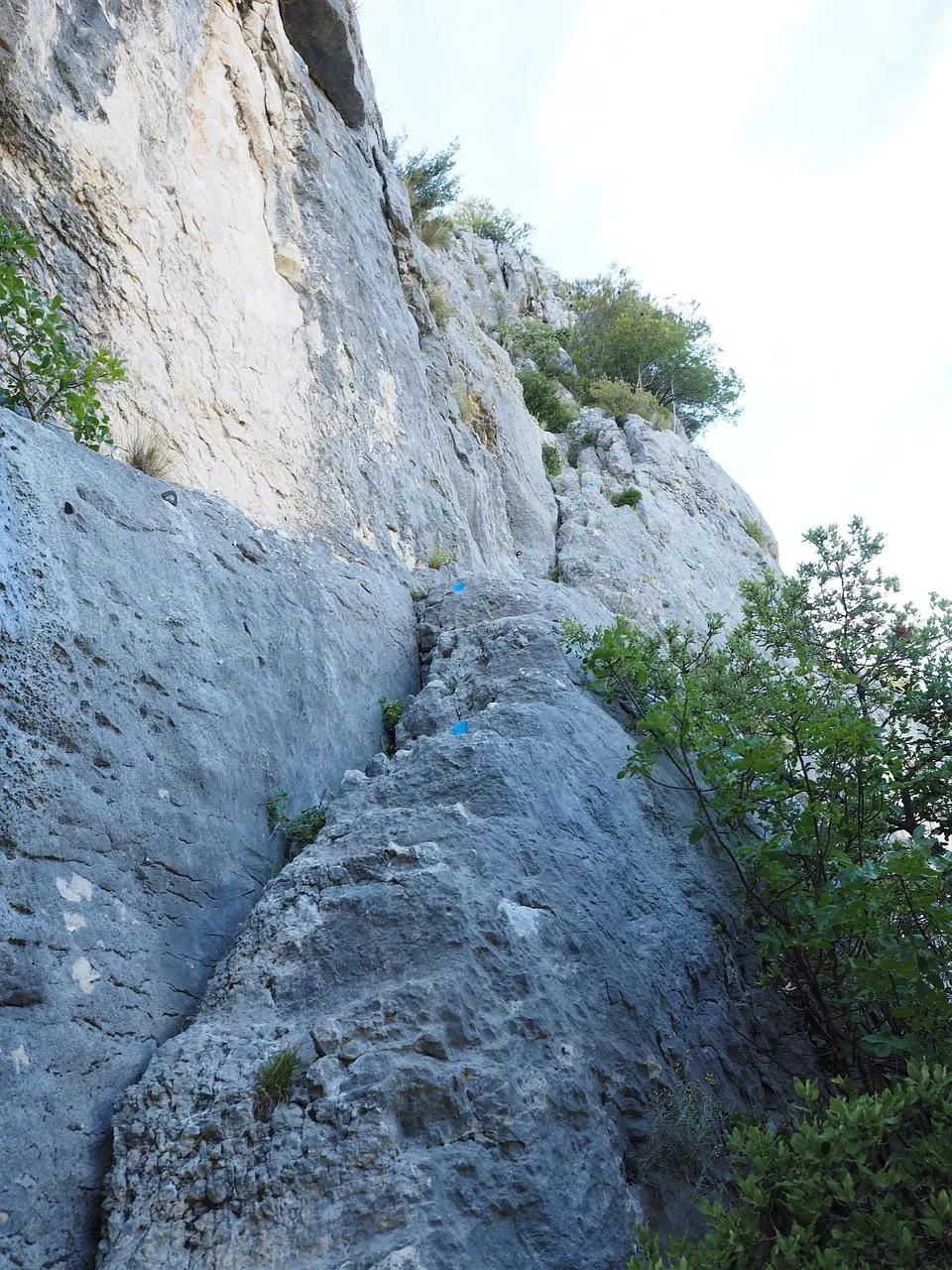
Accommodations
Košice offers accommodation in almost 400 different accommodation capacities, led by popular apartments, followed by hotels, boarding houses and hostels. Here you will find both luxury accommodation and cheap accommodation suitable for backpackers, for example.
For example, the 4* City Residence Apartment Hotel offers pleasant and highly rated accommodation. You can find it in the historic center of the city, which you can explore either on foot or by bike, which you can rent for free at the reception. The hotel offers accommodation in apartments or studios. The local restaurant provides not only breakfast served to the room, but also lunch and a permanent menu. On warmer days, you can enjoy your meal on the patio in the yard.
Lovers of boutique accommodation will certainly be interested in the Vila Terrasse guesthouse, located near the center in a residential area. From all rooms you can enjoy a view of the garden, where you can also find a sun terrace. Lovers of winter sports can use the ski storage room.
Among the popular accommodations in the city center is the Dorfel guesthouse. It offers accommodation in suites or rooms. The services provided at the reception include, for example, lockers, a concierge, valet parking and the provision of tourist information. You can also stay here with your pets.
For example, Hostel Vodna 1 offers cheap accommodation in the center of the city. You can stay in a mixed or double room or in an apartment. You can cook in the shared kitchen and there are lockers at the reception.
For a complete offer of accommodation in Košice, we recommend using A-HOTEL.com or Booking.com.
Typical food and drink
Bryndza dumplings - The national dish of Slovakia, which consists of halushka (small potato dumplings) served with bryndza (sheep's cheese) and bacon. It is a hearty and tasty dish, very popular throughout Slovakia.
Holubky – Stuffed cabbage leaves. Boiled cabbage leaves are filled with rice and minced meat, then everything is stewed or baked.
Kapustnica - Traditional Slovak sauerkraut, often served with sausage, mushrooms and sour cream. They prepare it especially during the winter months and at Christmas.
Goulash - A thick meat stew, often made from beef or pork, seasoned with paprika and other spices. It is served with bread or dumpling.

Pirogh - Stuffed pasta pockets, similar to Polish pierogies or Russian pelmeni. In Košice, they are often filled with bryndza, potatoes, cabbage or meat.
Lokše - Thin potato pancakes that can be served sweet or salty. Savory versions are often filled with duck or goose meat and cabbage, while sweet ones are served with poppy seeds or jam.
Cheeses – well-known and excellent Slovak cheeses that you should definitely try include brynza, oštiepok, korbáčik and parenica.
Borovička - Traditional Slovak juniper distillate, similar to gin. It has gained popularity throughout Slovakia and is often drunk as an aperitif or digestif.
Wines from Tokaj - The Tokaj region is located near Košice and is known for its sweet white wines. Tokaj wines are valued for their unique taste and quality.
Štrúdľa - Slovak version of the Austrian apple strudel, often filled with apples, cottage cheese or poppy seeds.
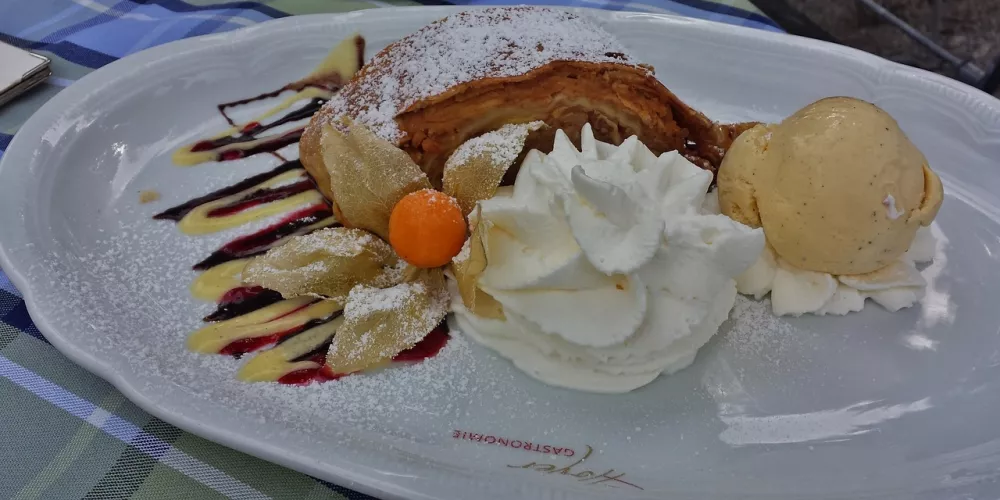
Practical advice for the trip
How to get to Košice? Košice has an international airport (KSC), from where you can reach the city center in approximately 10 minutes by car or taxi.
The main train station is located near the city center. Trains from here go not only to the rest of Slovakia, but also to some neighboring countries.
The bus station is also close to the center. Both international and domestic bus lines go here.
Košice is easily accessible via the D1 highway, which connects the city with Bratislava and other Slovak cities.
An efficient urban public transport system includes buses, trams and trolleybuses. You can buy tickets in machines at bus stops, in newsstands or via mobile applications.
Košice offers many restaurants and cafes where you can taste both local and international cuisine. You should try local specialties such as bryndza dumplings, cabbage and Tokaj wines.
You can enjoy fresh local products and traditional dishes while visiting local markets such as Tržnica.
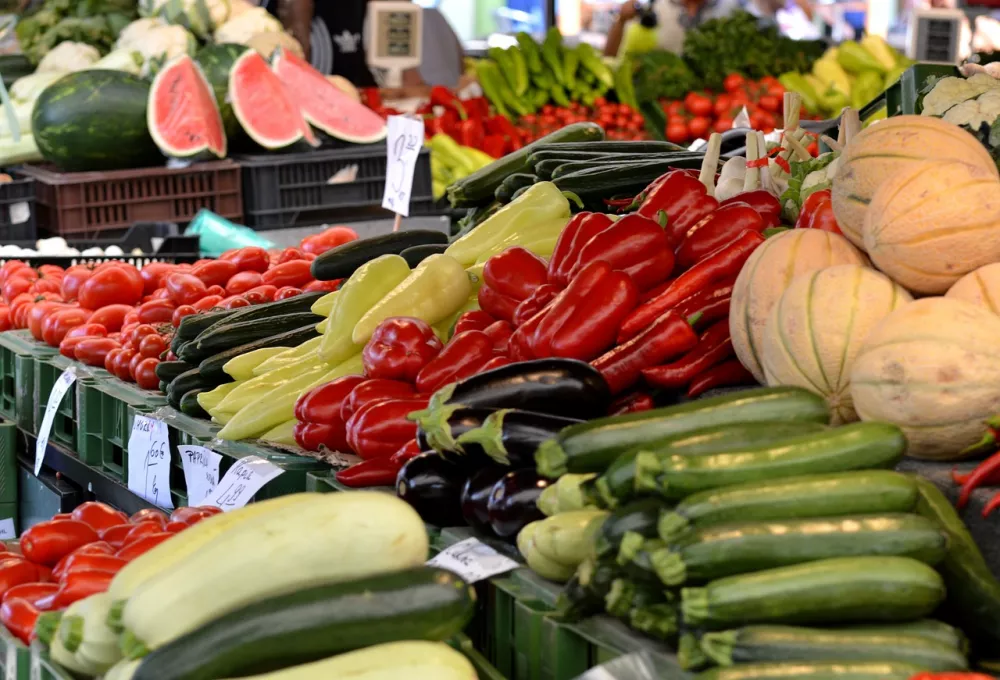
The official language is Slovak, but many people, especially the younger generation and workers in the tourism industry, speak English. Due to the proximity of Hungary and the local Hungarian minority, you will often meet Hungarian as well.
Slovakia uses the euro (€). ATMs can be found all over the city. Most shops, restaurants and hotels accept credit cards, but it's a good idea to have some cash with you for smaller purchases or at the markets.
Keep an eye on the local calendar of cultural events, as Košice hosts various festivals, concerts and theater performances throughout the year. Košice is known for its International Peace Marathon, the oldest marathon in Europe and the 3rd oldest in the world. It was run for the first time in 1924.
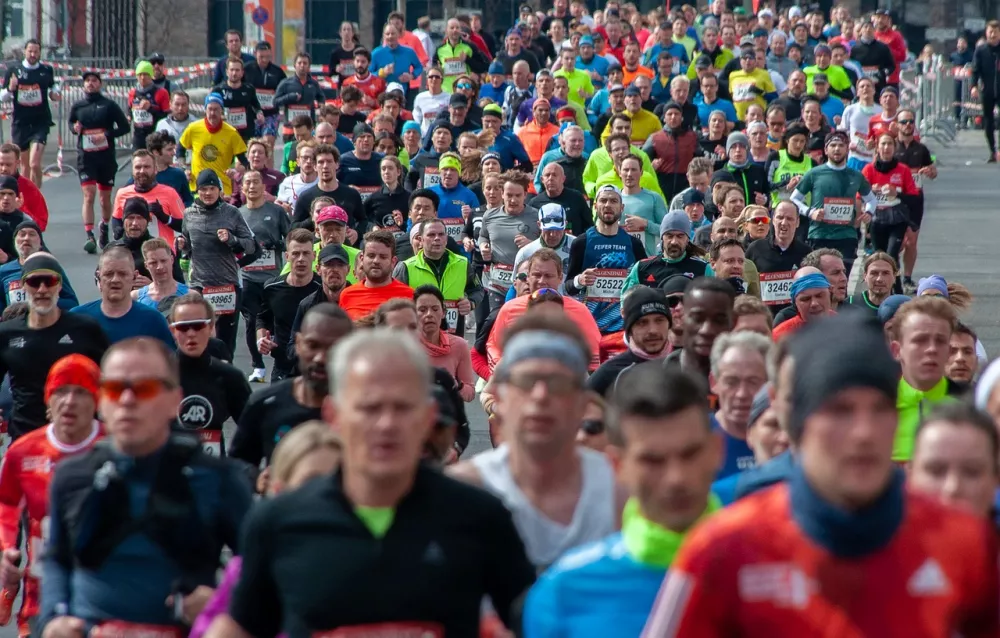
👍 Our tip: Dolná brána – an underground fortification museum. Located directly under the city center, it combines history with modern multimedia elements and allows you to see what the city's fortifications looked like, the conquest or the spread of fires or plague. A tour of the museum will take you about 20 minutes.
Weather
The climate in Košice is mild continental. This means that the city experiences four distinct seasons. Warm summers with average daily temperatures around 20-30°C, cold winters with average temperatures between 3 and -3°C and occasional snowfall. Spring and autumn bring mild temperatures and changeable weather, often with rainfall. It rains the most from May to July. To visit the city, we recommend September, when it hardly rains and temperatures drop to a pleasant 15-20°C.
Celebrities
Francis II Rákóczi (1676-1735) - Hungarian nobleman and leader of the uprising against the Habsburgs. In 1906, his remains were transported to Košice and placed in the Cathedral of St. Elizabeth.
Jozef Miloslav Hurban (1817-1888) - Slovak national revivalist, writer, journalist and politician who worked in the area of Košice.
Sándor Márai (1900-1989) - Famous Hungarian writer who was born in Košice. He wrote novels, essays and various articles.
Ján Bocatius (1569-1621) - Slovak poet, teacher and rector of Košice University. He was one of the first significant literary creators in the area. He also served as mayor of Košice.
Peter Bondra (1968-) - Slovak hockey player who started his career in Košice and later became one of the most successful players in the NHL.
Rudolf Schuster (1934-) - Slovak politician who served as president of the Slovak Republic in 1999-2004. Before that, he also served as mayor of Košice and chairman of the National Council of the Slovak Republic.
